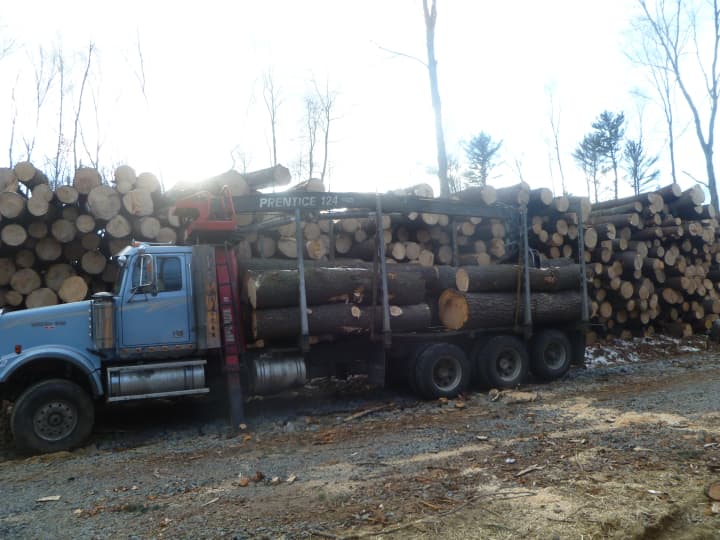The removal of trees along Route 58 is scheduled to be completed by the end of January, with Everett Road, North Park Avenue, Rock House Road and Valley Road scheduled next.
"Eighty five percent of the pine trees in the Centennial Watershed State Forest blew over in the storm and a controlled salvage cut of this type will allow the forest to naturally regenerate itself," said Gary Haines, watershed manager at the Aquarion Water Company. The company is overseeing the removal of the trees with the Connecticut Department of Energy and Environmental Protection and the Nature Conservancy.
Removing the trees, including some standing trees, also reduces the threat of traffic obstruction. "There are trees close to the road and it's necessary to remove them to prevent danger," Haines said. "Old trees damaged by wind will be blown over by the next good wind, and it's too dangerous to leave them by the road."
The trees are being cut and stacked and will be sold to a Canadian saw mill.
“No American mill bid and over 70 tractor loads have headed to the mill so far,” Haines said.
Cynthia Fowx, a Nature Conservancy representative, said removing the downed trees reduces the threat of fires and problems with insects and disease outbreak.
She said no new pine trees will be planted because there are sufficient pine cones to facilitate a natural regeneration. She said new growth will include black birch, sugar maple and hickory oak trees.
Jerry Milne, director of forestry at the Connecticut Department of Energy and Environmental Protection, sees a positive coming from the destruction.
“There’s plenty of seed in the ground to germinate new trees," he said, "which will produce a valuable young forest habitat that is lacking in Connecticut.”
Click here to follow Daily Voice Westport and receive free news updates.



